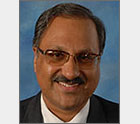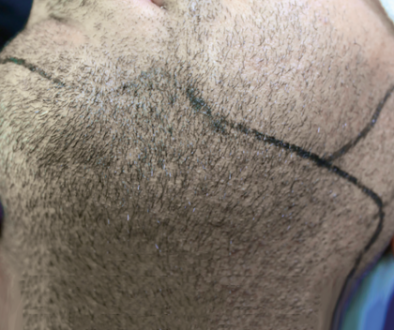Extraction vs. Insertion: What is the Most Important Stage in Follicular Unit Extraction (FUE) Hair Transplantation?
This below question was asked by a member of our Hair Loss Social Community and Discussion Forums and answered by recommended hair restoration surgeon Dr. Tejinder Bhatti.
So I’ve been reading lots and communicating with forum members about the increasing tendency for top rate hair transplant surgeons to use techs to perform the extraction phase, and then the surgeon will come in and do the insertion phase.
Why is it, do you think, that techs seem to be performing the extractions? Why not the other way round? Why aren’t techs given the insertions to do and the surgeons do the extractions?
It would appear to me that both are equally important, as during the extraction phase the donor hairs can get damaged – thus rendering the operation unsuccessful.
What are your thoughts?
 A cohesive skilled team is the key variable to a successful modern day hair transplant where mega-sessions are the norm. If one accepts this fact, it would be clear that a team has to be assigned duties for efficient completion of the task at hand.
A cohesive skilled team is the key variable to a successful modern day hair transplant where mega-sessions are the norm. If one accepts this fact, it would be clear that a team has to be assigned duties for efficient completion of the task at hand.
The second important variable by which outcomes are determined is the speed with which harvested slender fragile follicular unit extraction (FUE) grafts, devoid of protective covering and so more prone to desiccation, need to be returned back to the body (recipient area). It is only one person who can possibly harvest at one time. While harvesting requires skill and constant practice borne out of many months of relentless practice, slit creation is an art that needs to take into consideration the patient’s long term hair restoration goals, his/her hair styling preference (location of parting line for side parting hair styles, slick backs, spikes, etc.) which will determine the angle and planned strategic density variation in various esthetic locations in the bald scalp. The light and shade effect also plays a large part in determining where to place more slits than another.
Where harvesting is a skill, slit making is an art.
It is my personal opinion, and I think that of many leading FUE surgeons today, that a doctor who is doing all steps including plantation in today’s times is either an itinerant hair transplant surgeon who cannot afford a team or a poor leader, for a physician doing plantation after harvesting the grafts cannot do more numbers than roughly 1000 in an 8-10 hour session. After all, maintaining a great team is a daunting task and calls for inherent leadership acumen.
Reputed doctors with successful leading practices the world over devote their precious time to various stages other than plantation since the latter requires speed to accomplish and this can only be done by a team which keeps rotating. Plantation is a repetitive exhausting process which needs a keen eye, stamina, and skill. I cannot see myself maintaining my stamina and hand eye coordination under high magnification after I have spent 2-3 hours with a patient harvesting the grafts. Not only is it difficult for even young eyes to be in bright light for long periods but it is impossible even for nimble fingers to keep their stamina and dexterity required to densely pack 55 grafts inside a centimeter squared. I always rotate my staff in pairs for grafts greater than 1500. I fail to understand how a doctor can do all steps himself. Since speed is of the essence once the grafts are out, planting them by a single person who has been through the fatigue of harvesting would be the weakest link in the chain and needs to be condemned. However, some patients fail to understand this fact.
In a field where attrition rates are high due to poaching, I for one continue to better my harvesting skills while continually training back-up nurses for only plantation, for though I can train a planter in 3 months, a good harvesting technician/physician can only be trained in 2-3 years.
Moreover, it is illegal in many countries for technicians to do harvesting since they are technically incising the skin which is a qualified registered surgeon’s job. Plantation is the only step legally authorized to non-doctors.
It would be pertinent here to read the ISHRS Position Statement on Qualifications for Scalp Surgery.
Dr. Tejinder Bhatti
—-
David (TakingThePlunge)
Editorial Assistant and Forum Co-Moderator for the Hair Transplant Network, the Coalition Hair Loss Learning Center, and the Hair Loss Q & A Blog.
To share ideas with other hair loss sufferers visit the hair loss forum and social community.
Technorati Tags: Hair Loss, hair transplant, follicular unit extraction, FUE, hair restoration, bald, ISHRS



